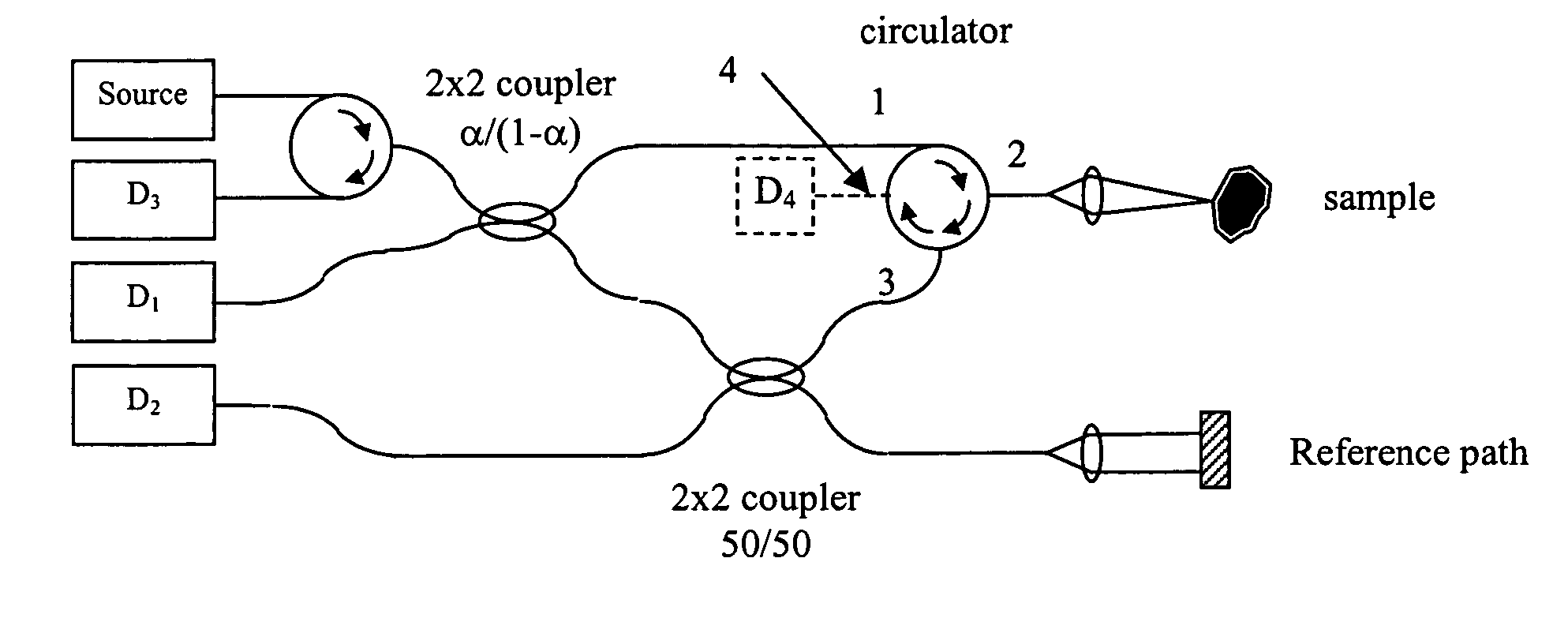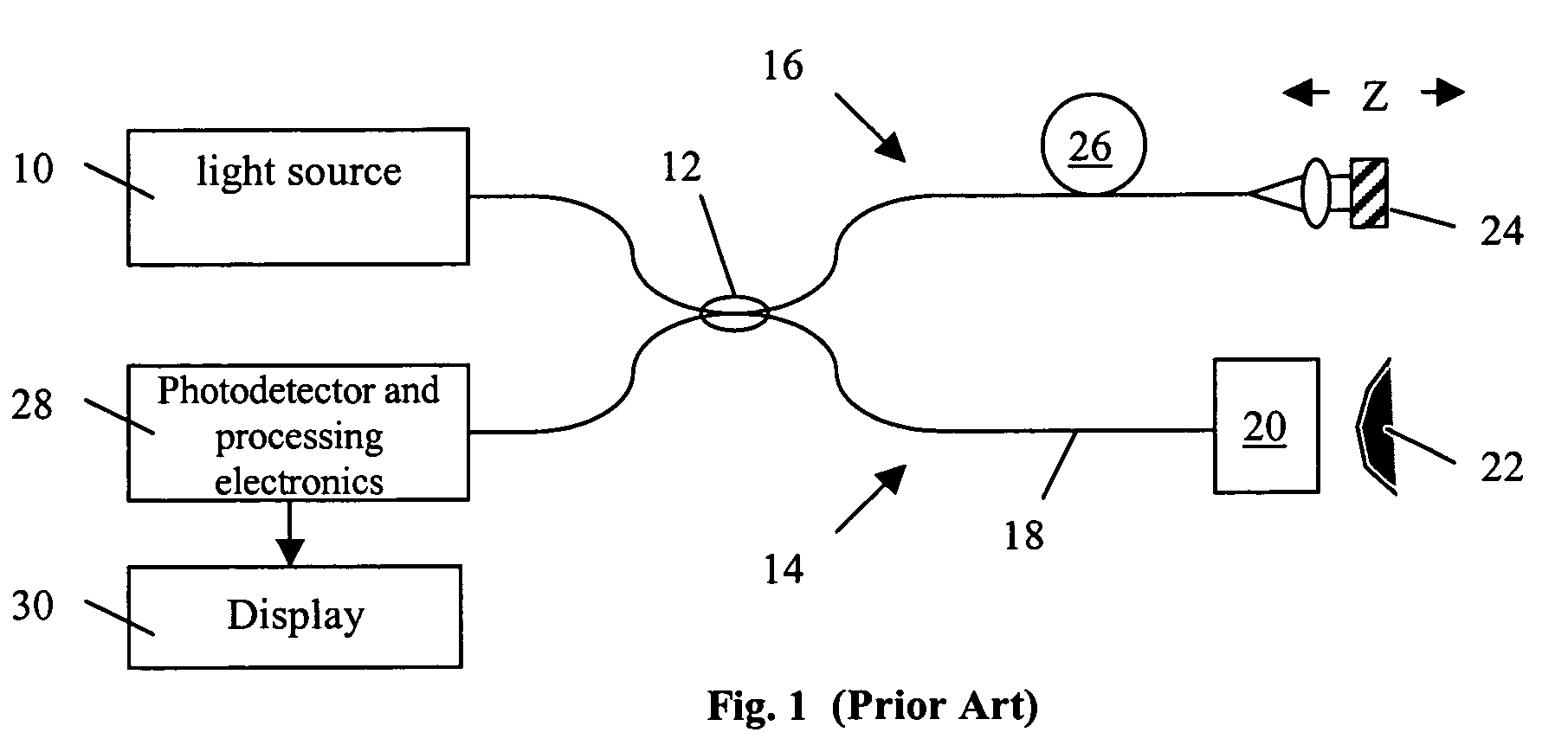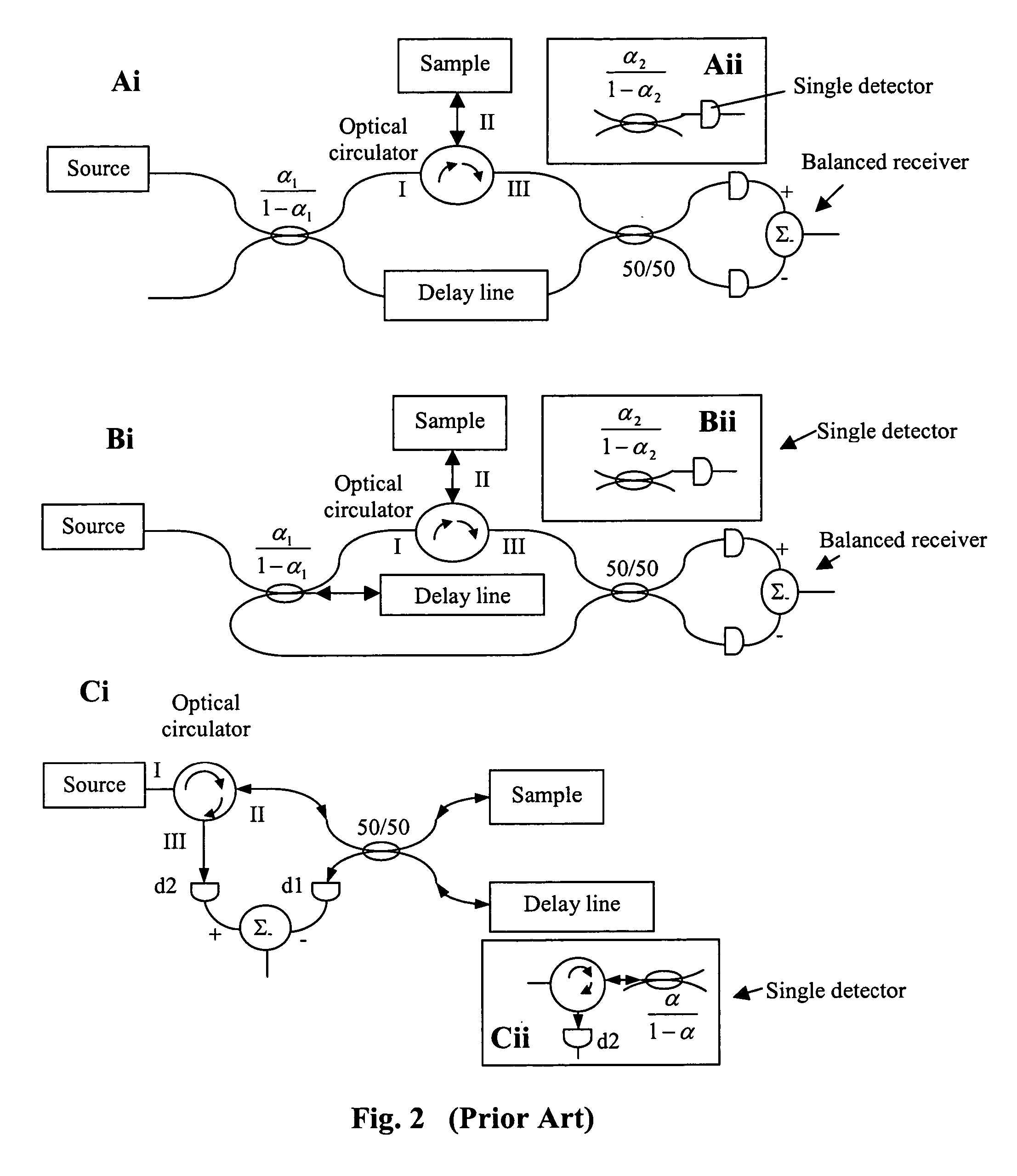High efficiency balanced detection interferometer
a detection interferometer and high-efficiency technology, applied in the field of optical imaging, can solve the problems of wasting nearly 75% of the optical power supplied by the light source in this configuration, limiting the configuration to an optical efficiency of 25%, and degrading the signal
- Summary
- Abstract
- Description
- Claims
- Application Information
AI Technical Summary
Benefits of technology
Problems solved by technology
Method used
Image
Examples
embodiment 1
[0046]FIG. 3a shows a first embodiment of the present invention. The light source introduces to the system a light wave. The light source can be any tunable, narrowband, or broadband light source having a center wavelength within the optical spectrum range from ultra-violet to near infrared. It is preferably derived from a laser, a tunable laser, a superluminescent diode (SLD), a light emitting diode (LED), a short pulsed laser such as a Ti:sapphire laser, a photonic crystal fiber laser or a spontaneous emission based rare earth doped optical fiber broad band light source. The light source is coupled to an input port (port I) of a monolithic 3×3 fiber coupler. A 3×3 coupler has a first set of three ports and a second set of three ports, and has the property that some light entering any port in first set is coupled to each port in the second set. For example a fused junction between three fibers is an example of a 3×3 coupler. It is preferred but not absolutely required that the 3×3 ...
embodiment 2
[0058]FIG. 4 shows another embodiment, in which two 2×2 couplers are connected in cascade. A 2×2 coupler has a first pair of ports and a second pair of ports, and has the property that some light entering any port in first set is coupled to each port in the second set. For example a fused junction between two fibers is an example of a 2×2 coupler. Another example of a 2×2 coupler is a plate beam-splitter. The net effect of this configuration is similar to that of embodiment 1. We will not repeat similar descriptions but rather highlight the differences. The key differences include the following: the first 2×2 coupler directly connected to the source is preferably an uneven split ratio coupler that channels most of the light to the sample path wherein light returned from the sample is channeled via the circulator to another 2×2 coupler that has a 50 / 50 split ratio; while the 50 / 50 coupler ensures that the interfered light waves in the two arms leading to detectors D1 and D2 are 180 d...
embodiments 3 and 4
[0064]As can be seen from embodiment 1 and embodiment 2, in order to ensure a dual balanced detection, strictly speaking, the split ratio of the recombining coupler for the returned sample wave and reference wave must be kept at 50 / 50 and there should be most preferably no more attenuation to either of the two interfered waves. In the case of embodiment 1, due to the fact that there is a small amount of recombined light being coupled at the coupling region back to the source arm, the phase relationship between the two interfered light waves propagating to detector D1 and detector D2 is not exactly 180 degrees out of phase but only close to this value. In the case of embodiment 2, although the relative phase relationship of the two light waves propagating to detector D1 and detector D2 is exactly 180 degrees out of phase for the case of a perfect 50 / 50 recombining coupler, the interfered light wave propagating to detector D1 is attenuated more than that propagating to detector D2. Du...
PUM
 Login to View More
Login to View More Abstract
Description
Claims
Application Information
 Login to View More
Login to View More - R&D
- Intellectual Property
- Life Sciences
- Materials
- Tech Scout
- Unparalleled Data Quality
- Higher Quality Content
- 60% Fewer Hallucinations
Browse by: Latest US Patents, China's latest patents, Technical Efficacy Thesaurus, Application Domain, Technology Topic, Popular Technical Reports.
© 2025 PatSnap. All rights reserved.Legal|Privacy policy|Modern Slavery Act Transparency Statement|Sitemap|About US| Contact US: help@patsnap.com



